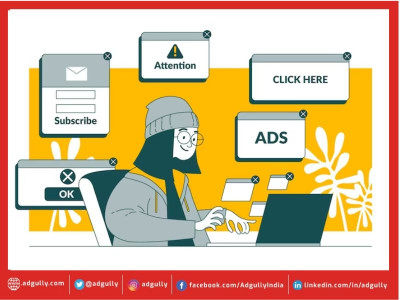How video conferencing apps like Zoom exploded into consumer consciousness sans marketing?
The lockdown, social distancing and Work From Home scenario has seen an explosion of video conferencing apps. Corporates are now connecting using video conferencing software such as Zoom, while friends are connecting using apps like Houseparty. Amul recently released a topical post about Zoom, indicating how they have become a part of everyday conversations.
There were 40 million users on Zoom in the pre-COVID-19 period. Those numbers jumped to 200 million users, displacing well entrenched players like Cisco WebEx, Microsoft Teams, Skype and Google Hangouts during the COVID-19 period.
When he launched Zoom, Founder and CEO Eric Yuan adopted the credo of Apple Founder Steve Jobs by developing an incredibly user-friendly product. Yuan’s origin story goes like this…
He was VP – Engineering at Cisco WebEx, where he met many customers unhappy with the experience of using the video conferencing software.
He launched Zoom in 2011 with several features that were important to the user:
- Being able to join from any device
- Built in tools for screen sharing
- Support up to 1,000 video participants
- Easy to sign up and use
Until 2015, the company did not have a marketing team and relied on word of mouth to bring in users. That strategy or lack thereof resulted in platform on boarding 40 million users.
Now, competitors like WhatsApp and Google Meet are launching their own competitor video conferencing platforms offering features available on Zoom’s platform. Reliance Jio Platforms, which is Reliance Industries’ Next Gen technology company, is bringing their own video conferencing product to market, christened JioMeet.
When big corporates like Tata Consultancy Services (TCS) are planning to have 75 per cent of their workforce working from home, then technology companies need to pay heed as demand for conferencing tools will shoot up.
Zoom’s immense popularity brought it under the scanner for violations of security and privacy. Many users feared ‘Zoombombing’, where hackers broadcast offensive material on Zoom calls, which led to poor experience.
By and large, however, the negative press failed to slow down the meteoric rise of the app as users cared more about product experience. Casual users of video conferencing apps adopted it early on, thereby creating word of mouth for the bigger corporates. Now, the company is working backwards to address privacy and security concerns. Some companies and public schools reportedly banned usage of the app. It reminds one of a short video platform which met a similar fate.
As technology platforms play catchup, we reached out to industry experts to understand how Zoom stole millions of users under everyone’s noses.
Dhruvi Joshi, Co-Founder & Head – Strategy & Media, PivotRoots, observed, “In the current phase, a large part of the world depends on video calls to be in constant touch with their loved ones and colleagues. As a result, video conferencing as a facility has seen tremendous growth and to add to this; multiple platforms have unrestricted their paid packages to ease users’ communication during the lockdown.”
Continuing further, she said, “It is probably the first time that we are going through a phase where people are experiencing FOMO (Fear of missing out) while looking at others spending time at home. Trends like Dalgona coffee, Safehands challenge, Workout challenges and other trends are ruling social media. The surge of apps like Houseparty and Zoom is a classic case of FOMO, which triggers people to download the app and sample it.”
People prefer these apps due to their spontaneous features and ability to hold more participants in a video conference call, both in business and personal video conferences. Houseparty has an interactive feature through popular games like Head’s Up, Trivia and a casual interface which adds on to the video conferencing experience. People have also been using social media to put up screenshots and recordings of themselves and their friends/ loved ones using these apps, which has added to the popularity of these apps. Apps like these have emerged like a saviour, at least for a while, during the COVID-19 crisis, helping people get closer virtually during times of social distancing.
According to Tanay Kumar, Co-Founder, CEO and CCO, Fractal Ink Linked by Isobar, “It is the Scarcity principle. There is a predominant feeling of resources getting finished. Although this feeling is more attached to manufactured or physical goods, it rubbing off strongly on our overall mindset. The sheer nature of this force has propelled people to look at digital products as a relief and hence, in the race to adopt this and quickly try to fill the gap has given rise to their popularity.”
“Although we were exposed to all kinds of VC software, it never was a viable option if F2F (face to face) was possible. As humans, we like to touch, feel and possess things and although digital came close to that, it was never seen as a replacement. Also, there were nuances of F2F meetings which never got realised in a digital format. There are disruptors like Houseparty, Zoom and many more around, who were silently trying to build digital offerings based on these nuances. Also, most of the popular tools in this zone are solely attributed to work life,” Kumar added.
The COVID-19 crisis and ambiguity of its effect on our overall way of life has made us a bit paranoid and as humans, we want to quickly get on to something that gives us a feeling of normalcy. New age softwares bear the promise of that normalcy in social and work life. They are trying to capture quickly the market by building upon this need of talking to one’s friends and family with utmost convenience.
Video conferencing was always seen as an expensive proposition and the incumbents in the zone were perceived as unaffordable for individual consumption. So, when the newer platforms saw this opportunity, they didn’t waste any time in communicating and talking to individual consumers and giving them a ray of hope to conduct their lives with minimum disruption. This has helped in the popularity of these apps.


















Share
Facebook
YouTube
Tweet
Twitter
LinkedIn